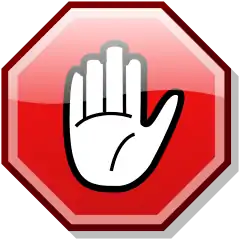3e SRD:Invisibility
Invisibility
Invisibility makes a creature undetectable by vision, including darkvision. A creature can generally notice the presence of an active invisible creature within 30 feet with a Spot check (DC 20). The observer gains a hunch that “something’s there” but can’t see it or target it accurately with an attack. A creature who is holding still is very hard to notice (DC 30). An inanimate object, or an unliving creature holding still, or a completely immobile creature, is even harder to spot (DC 40). It’s practically impossible (+20 DC) to pinpoint an invisible creature’s location with a Spot check, and even if a character succeeds at such a check, the invisible creature still benefits from full concealment (50% miss chance). A creature can use hearing to find an invisible creature. A character can make a Listen check for this purpose as a free action each round. A Listen check result at least equal to the invisible creature’s Move Silently check result reveals its presence. (A creature with no ranks in Move Silently makes a Move Silently check as a Dexterity check to which an armor check penalty applies.) A successful check lets a character hear an invisible creature “over there somewhere.” It’s practically impossible to pinpoint the exact location of an invisible creature. A Listen check that beats the DC by 20 reveals the invisible creature’s location.
| Invisible Creature Is: | DC |
|---|---|
| In combat or speaking | 0 |
| Moving at half speed | Move Silently check |
| Moving at full speed | Move Silently check at –4 |
| Running or charging | Move Silently check at –20 |
| Some distance away | +1 per 10 feet |
| Behind an obstacle (door) | +5 |
| Behind an obstacle (stone wall) | +15 |
A creature can grope about to find an invisible creature. A character can make a touch attack with his hands or a weapon into two adjacent 5-foot areas using a standard action. If an invisible target is in the designated area, there is a 50% miss chance on the touch attack. If successful, the groping character inflicts no damage but has successfully pinpointed the invisible creature’s current location. (If the invisible creature moves, its location, obviously, is once again unknown.)
If an invisible creature strikes a character, the character struck still knows the location of the creature that struck him (until, of course, the invisible creature moves). The only exception is if the invisible creature has a reach greater than 5 feet. In this case, the struck character knows the general location of the creature but has not pinpointed the exact location.
If a character tries to attack an invisible creature whose location he has pinpointed, he attacks normally, but the invisible creature still benefits from full concealment (and thus a 50% miss chance). At your option, a particularly large and slow creature might get a smaller miss chance.
If a character tries to attack an invisible creature whose location he has not pinpointed, have the player choose the space where the character will direct the attack. If the invisible creature is there, conduct the attack normally. If the enemy’s not there, roll the miss chance as if it were there, don’t let the player see the result, and tell him that the character has missed. That way the player doesn’t know whether the attack missed because the enemy’s not there or because you successfully rolled the miss chance.
If an invisible character picks up a visible object, the object remains visible. One could coat an invisible object with flour to at least keep track of its position (until the flour fell off or blew away). An invisible creature can pick up a small visible item and hide it on his person (tucked in a pocket or behind a cloak) and render it effectively invisible.
Invisible creatures leave tracks. They can be tracked normally. Footprints in sand, mud, or other soft surfaces can give enemies clues to an invisible creature’s location.
An invisible creature in the water displaces water, revealing its location. The invisible creature, however, is still hard to see and benefits from one-half concealment (20% miss chance).
A creature with the scent ability can detect invisible creatures as it would a visible one.
A creature with the Blind-Fight feat has a better chance to hit an invisible creature. Roll the miss chance twice, and he misses only if both rolls indicate a miss. (Alternatively, make one 25% miss roll rather than two 50% miss rolls.)
A creature with blindsight can attack (and otherwise interact with) creatures regardless of invisibility.
An invisible burning torch still gives off light, as does an invisible object with a light spell (or similar spell) cast upon it.
Ethereal creatures are invisible. Since ethereal creatures are not materially present, Spot checks, Listen checks, Scent, Blind-Fight, and blindsight don’t help locate them. Incorporeal creatures are often invisible. Scent, Blind-Fight, and blindsight don’t help creatures find or attack invisible, incorporeal creatures, but Spot checks and possibly Listen checks can help.
Invisible creatures cannot use gaze attacks.
Invisibility does not thwart detect spells.
Since some creatures can detect or even see invisible creatures, it is helpful to be able to hide even when invisible.
Back to Main Page → 3e Open Game Content → System Reference Document → Special Abilities

